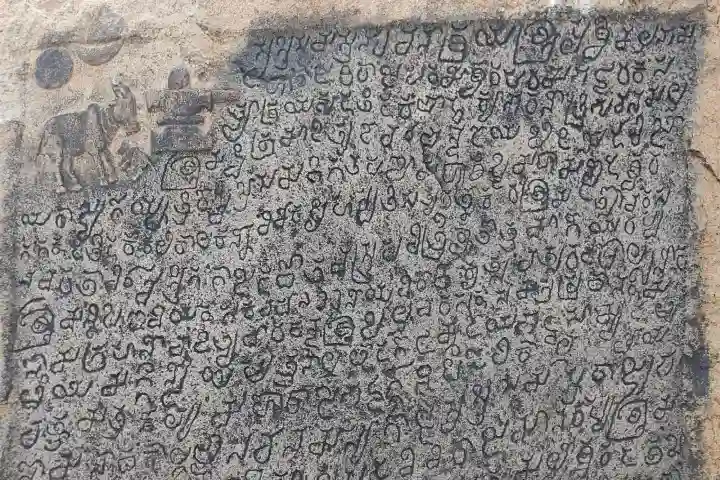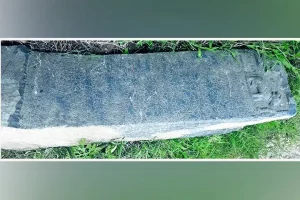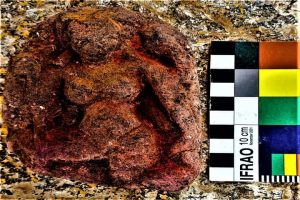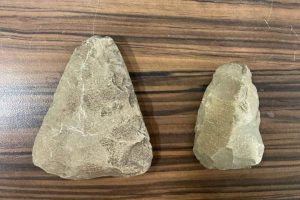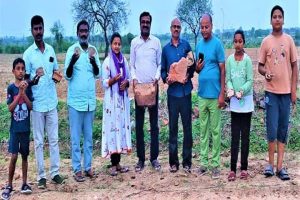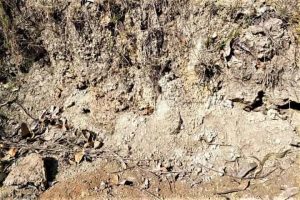The members of Kotha Telangana Charitra Brundam, an organisation of amateur archaeologists and history lovers, made two significant finds in Ummeda village in Nizamabad district. They found the two inscriptions are from the Chalukyan period that have been carved on rock boulders close to the Kalabhairava Swamy temple.
Information about the first inscription was provided by Adabake Nagesh, Chatla Gayatri and Rathod Praveen and KTCB members Katakam Murali and Balagam Rammohan on reaching the spot, cleaned it and found it to be an inscription. The message in this engraving was deciphered by Sriramoju Haragopal, Convenor of KTCB.
Sharing details about the inscription, Haragopal told India Narrative: “It is five feet wide and four feet in height and pertains to the reign of Tribhuvanamalla Vikramaditya V who ruled from 1008 to 1015 AD. The Prime Minister to the King, Pallavarasa ordered the inscription in the name of his ruler. While the inscription is dated February 10, 1012, it is in Telugannadam script and the language is Kannada. The number of lines is 17.”
Providing more information, Haragopal informed India Narrative that it talks about the donation made by this royal official. “It states that on February 10, the Prime Minister washed the feet of Guru Somanatha, an ascetic who resided at the Kalabhairava Swamy temple and donated 90 acres of land to him and all those serving the temple.”
When asked by IN to which faith the ascetic belonged to, Haragopal said that could be verified by the inscription. Haragopal added that in the past the State Archaeological Department had found an etching belonging to Vikramaditya V’s reign. “This was located at Nandikandi in Sangareddy district and its details are mentioned in the Nizamabad District Inscriptions Volume.”
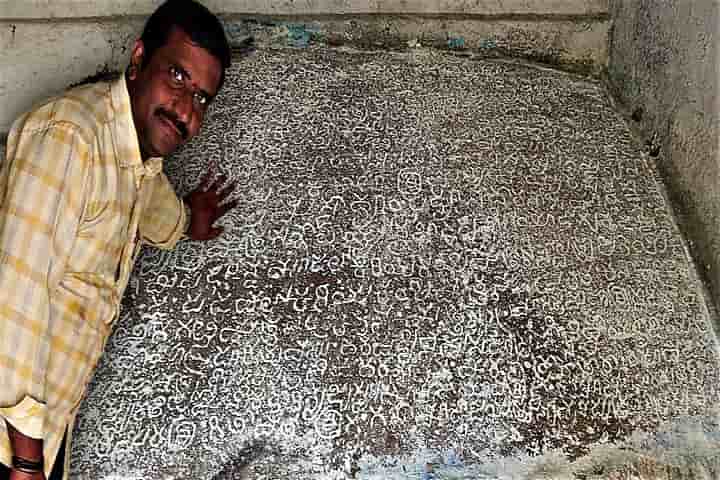
Following this discovery, information about another inscription was provided by Rishi Kharwad Kar, Gummadi Chandrasekhar and Butcha Sai Reddy Gara of Ummeda to KTCB whose member Rammohan checked it. As it was covered with lime, he cleaned it with the help of local people.
Talking about this second inscription, Haragopal who deciphered it told India Narrative: “It is three feet high and four feet wide and there are 20 lines. The date on the engraving is September 29, 1017 AD during which Jagadekamalla ruled.”
Jagadekamalla interestingly was also known as Jayasimha II and Mallikamoda and he succeeded his brother Vikramaditya V on the Western Chalukya throne and ruled from 1015 to 1043 AD.
According to the convenor, “the message in this carving talks about donation made in the memory of a royal official named Mandaleshvara by Somarasa who also held a high position in the court. The latter gifted land both dry and wet in the name of the former to Prasannacharya, a Jaina ascetic who was well versed in Ashtanga yoga.”
Ashtanga yoga or the eight limbs of yoga is Patanjali’s classification of classical yoga which is set out in his Yoga Sutras.
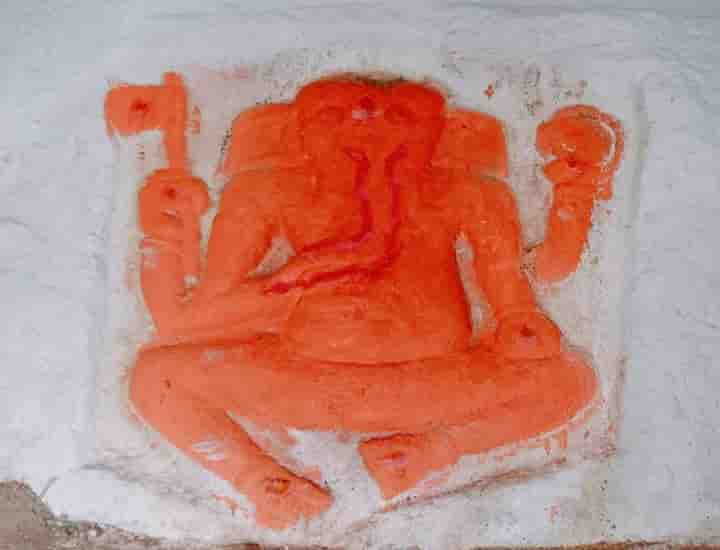
Haragopal made a significant observation in this engraving. Sharing it with India Narrative he said: “It has sculptures of Ganpati (Lord Ganesha) and Naga Veer below it. These are worshipped by the locals every Monday. These sculptures are in Rashtrakuta style. The Ganesha is on the right side and a little away from it on the left is the Naga Veer.”






